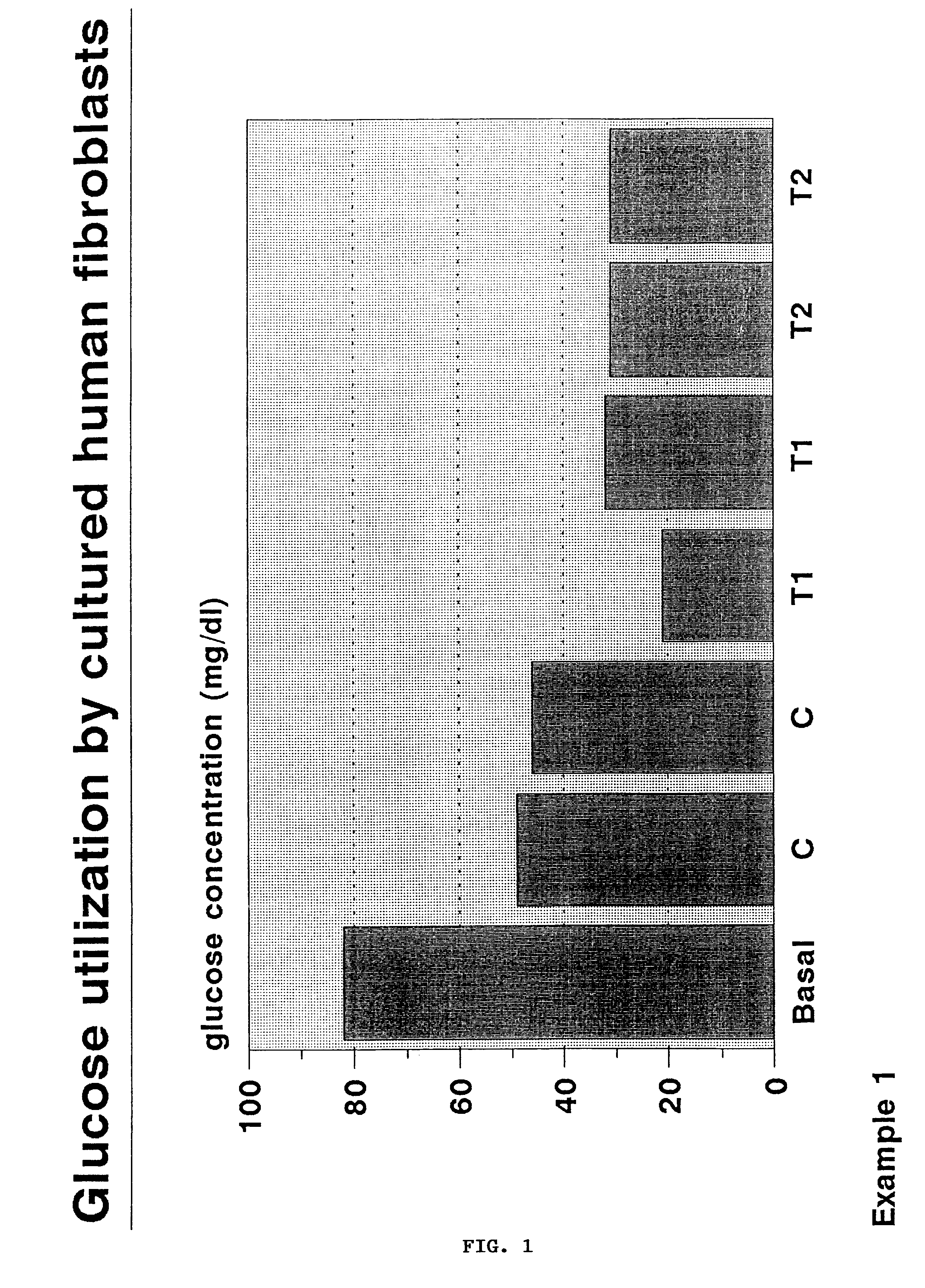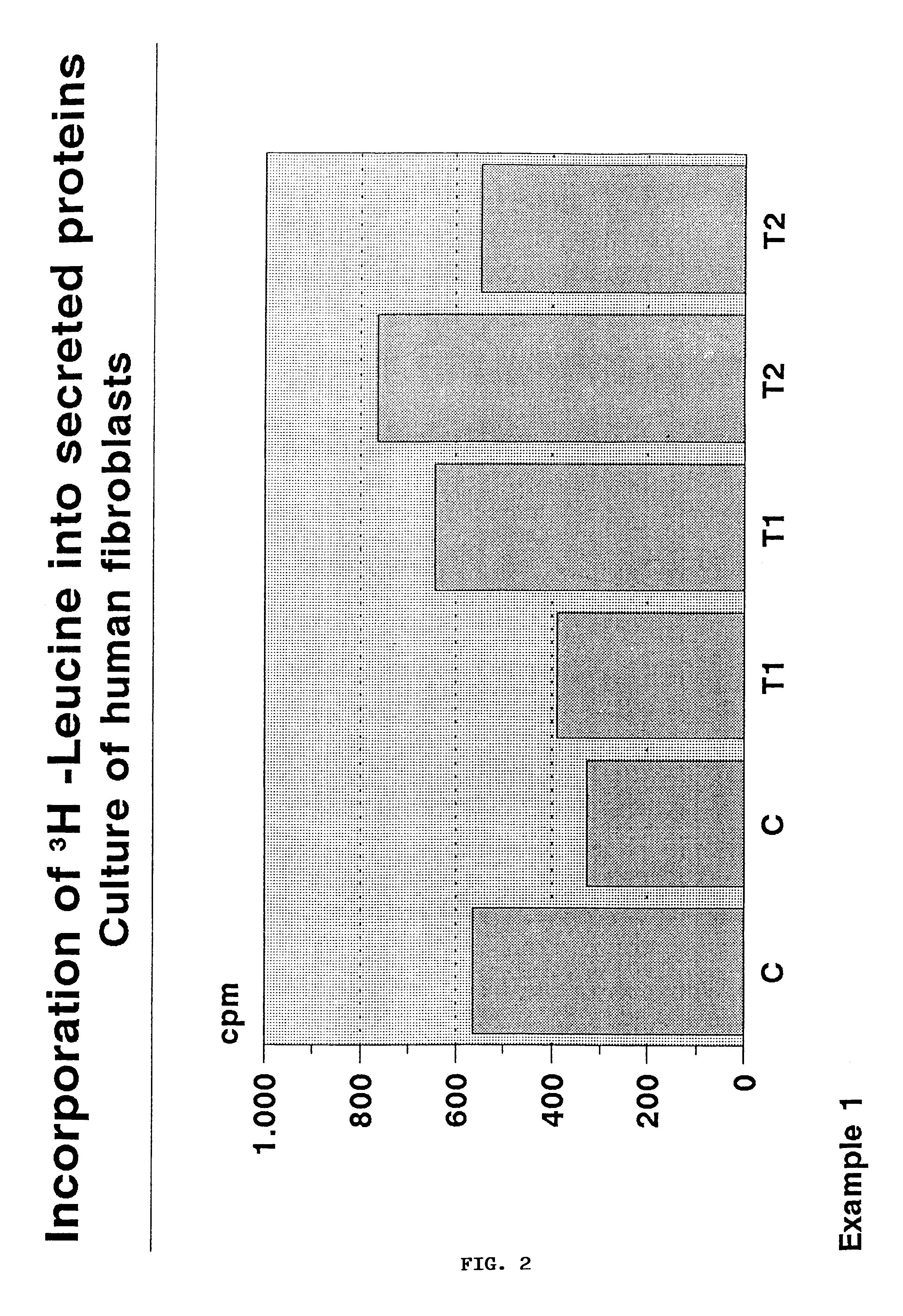Encapsulation of supported animal cells using gas-phase inorganic alkoxides
a technology of inorganic alkoxide and supported cells, which is applied in the direction of immobilised enzymes, biochemistry apparatuses, enzymes, etc., can solve the problems of insufficient stiffness and reduced mass transfer with the medium, and achieve the effect of free exchange of nutrients and avoiding antibody and immune-cell invasive action
- Summary
- Abstract
- Description
- Claims
- Application Information
AI Technical Summary
Benefits of technology
Problems solved by technology
Method used
Image
Examples
example 1
Glass fabric disks, diameter 2.5 cm and thickness 1.5 mm, composed of fibers 10 .mu.m in diameter and textured by 100.times.100 .mu.m meshes, are hydrolyzed for 30 minutes in a sterilization apparatus operating at 130.degree. C. Disks are coated by a 0.1-0.2 .mu.m layer of SiO.sub.2, modified by Si--CH.sub.3 bonds, upon dipping into a 1 M ethanol solution of CH.sub.3 Si(OC.sub.2 H.sub.5).sub.3 in the presence of aqueous 10.sup.-3 M HCl providing a Si--OR / H.sub.2 O=1 molar ratio. The solution viscosity ranges in the interval 0.1-5 Pas, the extraction rate is 102 cm / minute. After consolidation for 24 hours at 40.degree. C., the disks are sterilized by steam and placed into 7 cm.sup.3 polistyrene wells, 2.5 cm in diameter. Human fibroblasts are obtained by skin biopsy and cultured in Dulbecco's Modified Eagle's Medium (DMEM), supplemented with 10% fetal calf serum (FCS). Two ml of DMEM+10% FCS, containing a suspension of fibroblasts (1.times.10.sup.6 cells / ml) are added to the wells. C...
example 2
Polyesther rods, diameter 2.5 cm and thickness 0.5 cm, obtained from a continuous sponge-like blanked, are washed until complete release of powdered particles. After drying, rods are placed into polistyrene wells 3 cm in diameter containing 0.6 cm.sup.3 of solution composed a 2 M ethanol solution of CH.sub.3 Si(OC.sub.2 H.sub.5).sub.3 in the presence of 10.sup.-3 M HCl aqueous solution, providing a Si--OR / H.sub.2 O=2 molar ratio. The systems are left in air at room temperature till gelling of the solution into the bottom surface of rods; these are removed and consolidated at 40.degree. C. for 24 hours. Samples are sterilized by steam at 130.degree. C. for 40 minutes and put into wells, 2.5 cm in diameter and 2.5 cm in depth. Four ml of DMEM+10% FCS, containing a suspension of 25.times.10.sup.4 / ml H4-II-E-C3 rat hepatoma cells (American Type Culture Collection n.degree. CRL 1600, Rockville, Md.) are then added to the wells. Cells are incubated for 24 hours at 37.degree. C. under 5% ...
example 3
Sterile inorganic membranes, sealed to the bottom of 6 cm.sup.3 polistyrene cups, 2.5 cm in diameter, purchased from Nunc Intermed (Roskilde, Denmark) are added 1.5 ml of a suspension of H4 (rat epatoma) cells in DMEM+10% FCS (concentration of 25.times.10.sup.4 / ml). Cells are allowed to grow on the membrane by incubation for 24 hours at 37.degree. C. under 5% CO.sub.2. The liquid medium is poured out and cups are transferred into a 3 dm.sup.3 glass reactor and placed in order over a rack, allowing membrane venting on both sides. Some cups are not subjected to reaction and are used as controls. The reactor is equipped with a head, that can be dismantled, and ports for air inlet and outlet and for temperature control. Here, wet samples are invested by an air flux of 100 cm.sup.3 / minute for 10 minutes, then reacted with a 50 cm.sup.3 / minute air flux saturated with Si(OC.sub.2 H.sub.5).sub.4 --HSiCH.sub.3 (OC.sub.2 H.sub.5).sub.2. Air saturation is performed by bubbling into a Si(OC....
PUM
 Login to View More
Login to View More Abstract
Description
Claims
Application Information
 Login to View More
Login to View More - R&D
- Intellectual Property
- Life Sciences
- Materials
- Tech Scout
- Unparalleled Data Quality
- Higher Quality Content
- 60% Fewer Hallucinations
Browse by: Latest US Patents, China's latest patents, Technical Efficacy Thesaurus, Application Domain, Technology Topic, Popular Technical Reports.
© 2025 PatSnap. All rights reserved.Legal|Privacy policy|Modern Slavery Act Transparency Statement|Sitemap|About US| Contact US: help@patsnap.com


